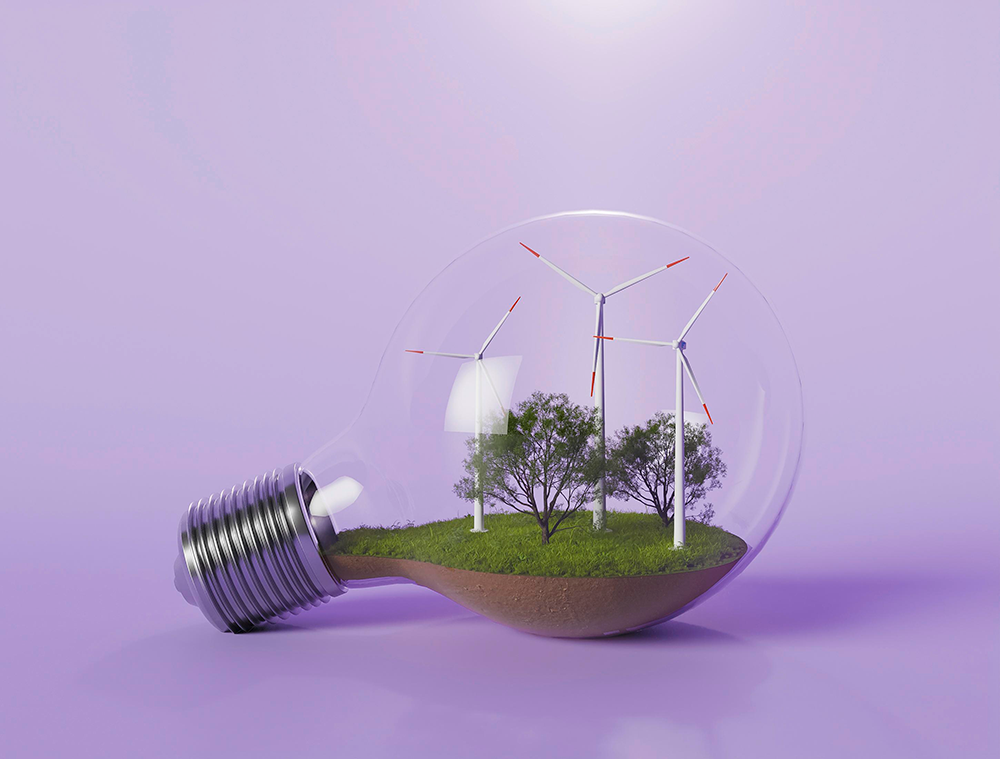Feb 18, 2022

Venture Capital investments: Climate-Tech Clicks
Venture capital investments in startups engaged in meeting the challenges of climate change are on the rise. These startups are leveraging technologies and innovation. As several conventional sectors are involved, they have carved a space for themselves as climate-tech firms which have been getting an increasing amount of early-stage capital flow for decarbonization solutions.
According to the most recent Investment Radar, firms in the climate-tech sector raised $53.7 billion from venture capital is concerned with and private equity in 2021. Over $22 billion of the total was spent on technology for the transportation industry, including lithium-ion batteries and electric aircraft. The trend continues to dominate, and venture capital investment is expected to go up in 2022 compared to previous years. The sectoral tipping points in energy, sustainability mobility, and agriculture, among others, are not very far.

Climate-Tech: Gaining Ground
According to Bloomberg, "Climate-tech" refers to products and business models that help the following six industries and sectors—energy, transportation, buildings and infrastructure, carbon and the environment, industry, and agriculture—decarbonize. In 2021, over two-thirds of the money went to energy and transportation, historically the most popular investment sectors, though the emerging agriculture sector has been gaining ground.
Climate-Tech versus Clean-Tech
Clean-tech, as we have traditionally understood it, is an innovative business model or technology that improves manufacturing performance, productivity, and/or efficiency while reducing environmental harm. This involves improving supply chains, the built environment, manufacturing, transportation, recycling and waste reduction, clean energy, clean air, clean water, and other areas. On the other hand, climate technology is described as any new business model and technology that lessens the effects and causes of global greenhouse gas emissions because it explicitly deals with addressing climate change (i.e., climate change). New technologies in areas like clean energy, which aims to lessen our reliance on fossil fuels that emit greenhouse gases, transportation, one of the top global emitters of GHGs, and the built environment are all included in this. When considering the current energy production mix, improved energy efficiency and innovative building materials can reduce the amount of energy used by buildings and, subsequently, GHG emissions.

Despite sharing many of the same topics as clean-tech, the two concepts have some significant differences. First, although clean-tech addresses a far wider range of human impacts on the environment, increasing GHG emissions only addresses a small percentage of those effects. Think about cutting-edge innovations that address the lack of clean drinking water in impoverished nations. While clean water is a significant issue for both the environment and human health, it does not actively reduce GHG emissions, making it clean-tech but not a climate tech. Like this, agricultural tech (agri-tech) solutions offer significant chances for reducing methane and sequestering carbon, which makes a difference in mitigating the effects of GHG emissions. However, the main objective of agri-tech is to create more effective and risk-free techniques for producing high-quality food, not to lessen our impact on the environment. Agri-tech is, therefore, climate technology but not clean-tech.
Climate Venture Capital
Between December 2021 and January 2022, accelerators, angel investors, seed funds,venture capitalists India , and private equity companies invested $7.6 billion in enterprises focused on climate technology. The most active investor during that time was Temasek, which participated in six investment rounds, including the $200 million raised last month by Indian electric scooter manufacturer Ola Electric. By participating in Next Gen Foods' $100 million Series A round of funding in February, the Singaporean investment firm increased its presence in the climate-tech sector.
In February and March 2022, transportation startups raised $4.5 billion in finance, including a $939 million late-stage funding round from SVOLT, the battery business spun off from Chinese automaker Great Wall Motor. The three technologies that have attracted the most investment are ride-hailing platforms, EV charging companies, and electric car battery solutions. The fact that most of these businesses are based in China emphasizes how rapidly the market is developing there. Startups raised $3.4 billion in December, making it the energy sector's most profitable month to date. A significant motivator was Commonwealth Fusion Systems' $1.8 billion financing, which was supported by investors like Breakthrough Energy Ventures, FootPrint Coalition, and Future Ventures.

The US at the Top
Because six of the world's most important climate investment centers are in North America and because of the developed venture capital industry there, the US has the most investment in climate technology (US$56.6 billion) of any area. Mobility and transport have attracted the biggest investment, totaling US$36.4 billion between H1 2013 and H1 2021. This accounts for more than half of all investments made globally in transportation and mobility. Food, Agriculture & Land Use (FALU), which requires US$6.9 billion in investment, and Energy, which requires US$4.9 billion, are the next two most important issue sectors. Europe is now the second-largest investor in climate technology (US$18.3 billion). Similar to the US, Europe invests the most in energy, FALU, and mobility & transport. The total amount invested in mobility and transport in Europe increased by 494% between H2 2020 and H1 2021 compared to the prior 12-month period.
China invested $9 billion, or 3 percent, of the global total in climate technology between H2 2020 and H1 2020. Investment is heavily weighted in favor of transportation and mobility. 99% of all climate technology investment in the area is represented by the US$8.9 billion raised in the challenge area. Investment in mobility and transportation at this level is wholly disproportionate. Investment is also spread among other problem regions in the US and Europe.
India: The Emerging Hotspot
Climate change is expected to cause at least 40% of India's population to face water scarcity by 2050, with 35 million people potentially facing annual coastal flooding. Currently, India is ranked seventh on the Global Climate Risk Index 2021, and climate issues could greatly impact its goal of building a $5 trillion economy over the next few years.

Globally, Climate Change Venture Capital tech firms increased from $6.6 billion in 2016 to $32.3 billion in 2021. The situation in India is also encouraging. According to a report by London & Partners and Dealroom.Co, India ranks ninth in the list of top 10 countries for climate technology investment over the past five years, and with sustainability at the top, Indian startups are getting a good push from the government. This resulted in climate tech firms receiving $1 billion in VC funding from 2016 to 2021. The Report reveals that over the past five years, 120 climate tech startups raised more than 200 funding rounds from 272 unique investors in India. Agriculture, energy, and mobility are the key sectors that attract robust seed funding from VC firms. Several factors and forces are forcing in favor of climate tech firms, and India has been emerging as a hotspot for private and venture capital investments in this segment. Indian Prime Minister Narendra Modi's commitment at the COP 26 summit that India will achieve net-zero emissions by 2070 is one of them.
Venture capital firms and private equity investors will continue to leverage India's transition towards net-zero emission and are expected to generate substantial returns. India is all set to scale up the climate tech ecosystem with rational policy, increasing investment, and global partnerships.
For the Sake of Tipping Point
It is widely admitted that viability is the key to higher startup investments. Once a technology develops a viable business model, capital flows quickly and can help increase both scale and adoption. More investment is needed across all challenge areas in order to support the scaling up of commercially ready technologies over the next ten years, as well as to enable breakthrough innovations and sectoral tipping points. Clear government action plans, support for stable carbon pricing, and the investment in Research & Development (R&D) needed to speed up technological innovation are all necessary policies to encourage investors. Over the next ten years and beyond, this will enable an expanding scale of quickly deployed investments into essential climate technologies.
carbon-removal technologies.jpg (Carbon-removal Technologies) More patient investment from early-stage VC investors is required to generate future breakthroughs. Investment in hard-to-abate technology (such as low GHG building materials) and carbon-removal technologies will be crucial to meeting global net zero targets; therefore, long-term strategic plans and specific policy measures by governments (e.g., a carbon price) are required.






